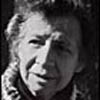Your shopping cart is empty!
Select currency
MENU

Lill Tschudi was born in the village of Schwanden, high in the mountains of eastern Switzerland. The village is known for its textile heritage, and Lill Tschudi would briefly experiment with designs for textiles when she put certain of her images onto pillow and cushion cases. She is now known almost exclusively, however, for her colour linocut work.
Lill Tschudi was first introduced to the linocut when, still a school-girl, she saw an exhibition of the colour cuts of animals by Norbertine Bresslern-Roth (1891-1978). Directly after school she noticed an advertisement in The Studio inviting applications for a training programme specialising in linocuts at The Grosvenor School of Art, London.
Lill Tschudi attended The Grosvenor School only briefly - from 1929-30 - but throughout her life she would maintain a close working relationship with the Grosvenor School linocut tutor Claude Flight (see Artists). He would encourage and help to further her career, and act as point of liaison in England whilst she worked abroad. From 1931-33 Lill Tschudi lived in Paris and studied with the Cubist artist André Lhote, then with the Futurist Gino Severini at the Academie Ronson, and finally under Fernand Léger at the Academie Moderne.
Lill Tschudi's early work clearly evinces the influence of Flight and the Grosvenor School. She assimilated Flight's formal language – the use of only a few blocks and the dispensing of a 'key' block (a block used to demarcate the main structures in a print); and in content, particularly initially, she also followed the teachings of Flight. Flight was inspired by the concerns of the Italian Futurists and by Vorticism. He encouraged the depiction of a modern man-made world – a world full of technological advancement, and one wherein life was to be lived at full tilt. And to this end Lill Tschudi took motor-car racing and the London Underground as subjects for her work. Soon, however – and like fellow student Sybil Andrews (see Artists) - Lill Tschudi would focus, not so much on the dynamism of technological forms, as on the rhythms and movements of the human figure. She took sporting themes as her subjects – circus tumblers, gymnasts, cyclists, runners and - again like Andrews - she often depicted men at work (see Fixing the Wires, 1932, and Cleaning a Sail, 1934). Whilst in Paris she focused on the life of the city: young browsers at a news-and-print stand (Kiosk in Paris, 1933); bill posters (Sticking up Posters, 1933), and for several of her most winsome prints, jazz music (see Rumba Band 1, 1935).
Lill Tschudi returned to Schwanden, Switzerland in 1935, but she continued to produce linocuts. Flight's annual exhibitions at the Redfern and the Ward Galleries in the 'thirties were incentive for her to send work to London regularly, and for these she created some six works per year. She received high critical acclaim for those she sent. One London critic wrote: 'she seems to seize activity on the wing, and fix it in her linocuts'*. Purchases soon followed from, amongst others, the V&A and the British Museum (each acquiring Fixing the Wires, in 1932 and 1933, respectively).
Over her lifetime Lill Tschudi produced 355 linocuts. Her work is now held in major print collections around the world and was featured extensively in the recent (2008) Fine Arts, Boston/Metropolitan, New York exhibition British Prints from the Machine Age - Rhythms of Modern Life 1914-1939.
*Quoted in Linocuts of the Machine Age, Stephen Coppel, p 126
British Museum, London; V&A Museum, London; Metropolitan Museum of Art, New York; Boston Fine Arts, Boston; National Gallery of Australia.
This is a Limited Edition Giclee Print by the artist Lill Tschudi 270mm x 323mm E..
£138.00 Ex Tax: £115.00
This is a Limited Edition Giclee Print by the artist Lill Tschudi 330mm x 220mm E..
£138.00 Ex Tax: £115.00
This is a Limited Edition Giclee Print by the artist Lill Tschudi 240mm x 285mm E..
£138.00 Ex Tax: £115.00
This is a Limited Edition Giclee Print by the artist Lill Tschudi 378mm x 200mm E..
£138.00 Ex Tax: £115.00
This is a Limited Edition Giclee Print by the artist Lill Tschudi 275mm x 326mm E..
£138.00 Ex Tax: £115.00
This is a Limited Edition Giclee Print by the artist Lill Tschudi 330mm x 218mm E..
£138.00 Ex Tax: £115.00